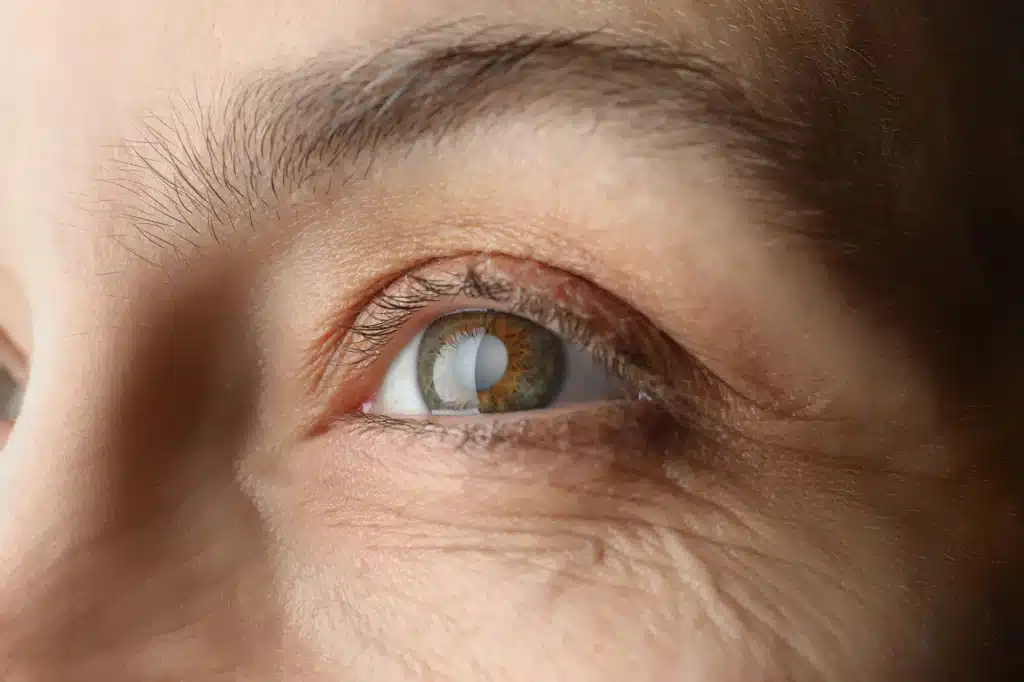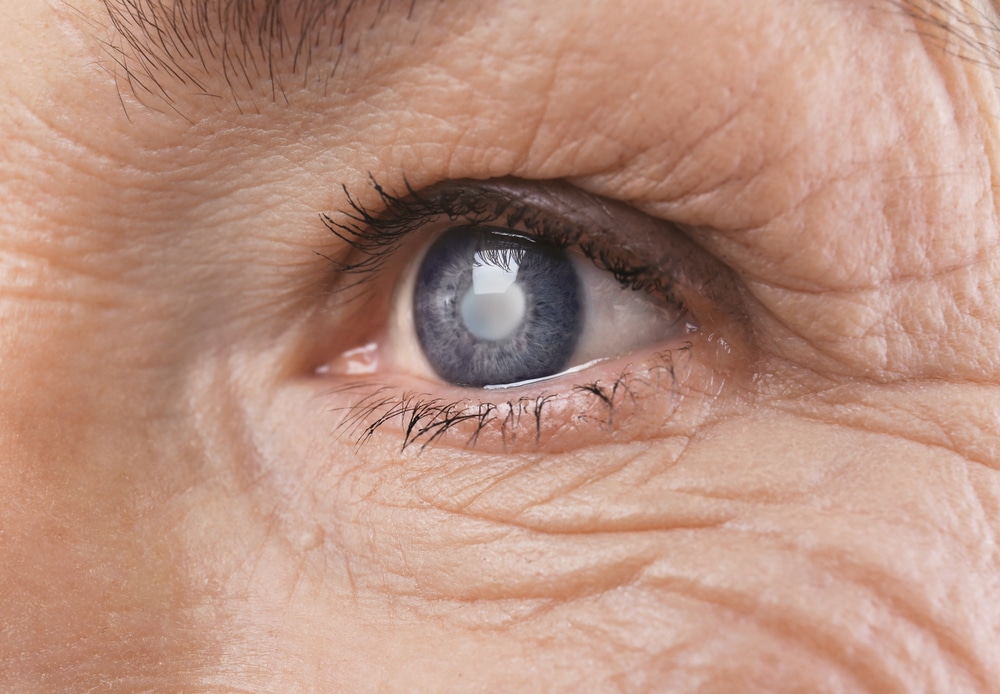Medically Reviewed by: Mark L. Mayo, M.D.
What Are the Three Types of Cataracts?
What are the three types of cataracts? Nuclear sclerotic cataracts, cortical cataracts, and Posterior subcapsular cataracts can all develop as a natural part of the aging process. The good news is that cataract treatment has only become more quick, safe, and painless over the years. If you have been experiencing hazy, muted vision, and are worried about developing cataracts that will impact your quality of life, you’re not alone. Cataracts affect more than 24.4 million Americans aged 40 and above and will affect approximately half of all Americans by age 75.
The good news is that cataract treatment is more available than ever. Cataract surgery is one of the most common (and most successful) procedures performed in the U.S., and Eye Center of Texas has performed more than 80,000 successful cataract procedures. If you are searching for cataract treatment, an eye care specialist from Eye Center of Texas can tell you which of the three types of cataracts you may be dealing with. But first, let’s discuss the basics.
What is a cataract?
A cataract is a clouding of the eye that prevents light from passing through the lens to the retina. Cataracts are caused by a buildup of protein (or old, dead cells) gathering on the lens and forming a cloudy area.
If you are unsure of whether you are developing cataracts you should visit an ophthalmologist. Common symptoms of cataracts include:
- Cloudy, dim vision
- Haloing around lights
- Poor night vision
- Sensitivity to bright light
- Your perception of colors is dull and washed out
- Double vision in one eye
- Prescription for eyeglasses or contact lenses changes frequently and doesn’t help vision
People often wonder about eye pain as it relates to cataract growth. Do my eyes hurt because of a cataract? Can cataracts cause headaches? Not usually, although your body can attempt to compensate for poor vision and indirectly give you a headache. Eye pain can, however, be caused by glaucoma. Thankfully, glaucoma and cataracts are both treatable eye conditions, for which the top eye doctors at Eye Center of Texas have many convenient treatment options available.
The three types of cataracts
Treatment for all three types of cataracts remains essentially the same, but there are some differences in detectability and rate of growth among them.
Nuclear sclerotic cataracts
Nuclear sclerotic cataracts are formed at the center of the lens and are usually formed as a result of aging. If you were wondering “what type of cataract is most common?” your answer is the nuclear sclerotic cataract.
These common cataracts involve a process called “sclerosis,” or the gradual hardening and yellowing of the lens, that can cause difficulty in distinguishing between different colors and seeing in low light. Nuclear sclerotic cataracts usually develop slowly, and sometimes do not require surgery for a long time.
Cortical cataracts
Cortical cataracts develop on the outer layer of the lens, and are often noticeable in early stages due to white streaks forming on the lens cortex called “cortical spokes.” As they develop, these white streaks often grow and connect to one another, eventually clouding the center of the lens and blocking light from passing through. While cortical cataracts can be a minor inconvenience in the short term, surgery will ultimately be necessary to correct vision for those affected.
Posterior subcapsular cataracts
Posterior subcapsular cataracts are formed at the back of the lens, and are found most commonly in people who have had damage done to their eye via previous eye surgeries or injury, sustained high blood sugar levels, or have had their eye treated with steroids.
Posterior subcapsular cataracts are considered fast-growing cataracts. What is a fast-growing cataract? Fast-growing cataracts can progress to the point of vision loss in as little as weeks or even days, compared to the months or years that it would normally take a cataract to develop.
Although posterior subcapsular cataracts do not always progress rapidly, leaving them untreated can result in vision impairment to the point of blindness. If you have cataracts of any kind, you should speak to an ophthalmologist about treatment options today.
Types of cataract surgery
While home remedies for cataracts are a great tool for cataract prevention, there are no proven non-surgical means for cataract reversal or treatment at this point. If you have cataracts and you want to get rid of them, a procedure will be your best chance at obtaining clear, healthy vision.
The good news is that the procedures are surprisingly quick and painless, and Eye Center of Texas offers a number of options for cataract surgery:
- Laser cataract surgery: Using the LenSX Laser for unprecedented precision, accuracy, and success rates.
- The multifocal intraocular lens: For patients who rely on reading glasses or bifocals in their daily lives.
- The Toric lens implants: For those who need astigmatism corrected while simultaneously replacing a cataract clouded lens.
Eye Center of Texas has the cataract procedure for you, no matter what your vision, no matter what type of cataract.
Continue reading: How long does cataract surgery last?
Find relief from all three types of cataracts at Eye Center of Texas
For more information about how Eye Center of Texas can help you find relief for all types of cataracts, come visit one of our ophthalmologists today. We can tailor a vision plan to your vision and your cataracts so that you will walk away not only with relief from cataracts, but improved vision as well!
Call Eye Center of Texas today at (713) 797-1010 or schedule an appointment online to start seeing clearly.
More Helpful Articles by Eye Center of Texas:
- EVO Visian® ICL: The Latest in Vision Correction Surgery
- The Differences Between EVO Visian® ICL and Toric ICL
- How to Find a Glaucoma Specialist in Houston
- What Are The Best Alternatives to LASIK?
- When to See an Ophthalmologist for Eye Disease Diagnosis
Related Articles
Financing Options Available
Apply today to find a financing option that meets your needs.
Our Locations
Houston/Bellaire
6565 W. Loop S., Suite 650Bellaire, TX 77401
Medical Office:
713-797-1010
Medical Fax:
713-357-7276
LASIK/Near Vision:
Office: 713-395-1515
Fax: 713-357-7278
Pasadena
4415 Crenshaw RoadPasadena, TX 77504
Medical Office:
281-977-8800
Medical Fax:
281-977-8877
Sugar Land
15200 S.W. Freeway, Suite 130Sugar Land, TX 77478
Medical Office:
281-277-1010
Medical Fax:
281-277-4504
Clear Lake
455 E. Medical Center Blvd., Suite 110Webster, TX 77598
Medical Office:
281-332-1397
Medical Fax:
281-282-9152
Katy
Greenhouse Medical Plaza2051 Greenhouse Road, Suite 110
Houston, TX 77084
Medical Office:
713-797-1010
Medical Fax:
281-214-2971
The Woodlands/Conroe
100 Medical Center Blvd., Suite 118Conroe, TX 77304
Medical Office:
713-797-1010
Medical Fax:
936-647-1620


